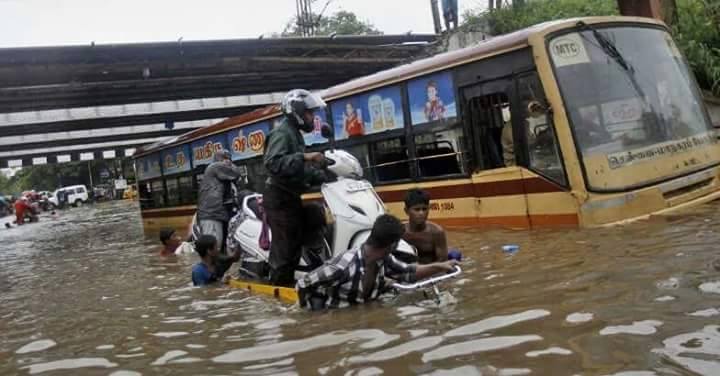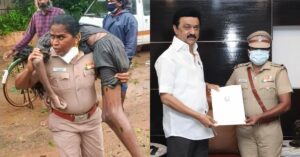MY VIEW: 10 Important Solutions to Prevent Floods Learnt From Chennai
A group of civil and structural engineers give probable solutions and talk about the lessons learnt from the Chennai floods.

A group of civil and structural engineers give probable solutions and talk about the lessons learnt from the Chennai floods.
After the recent floods, most Chennaites have undergone the experience of living in an unplanned city. As the city grew, it occupied most of the water bodies. Though we cant change the plan of the city, here are some ways in which we can make the city ready for any eventuality due to incessant rain. We have made technical and non-technical solutions. We want to gather civil engineers and other like-minded people to be a part of them team and find the best solutions. This is an initiation to go further and make Chennai a flood-proof city in the future.
Here are the technical solutions
1. Improve flood water disposal system

The present drainage system is not designed for the sheer size of the population. Therefore, in case of heavy incessant rains, the drainage pipes do not have the capacity to dispose all rain water in a short time. We suggest the disposal of flood water by separate storm water lines or existing drainage lines with automatic pumps. Most people are not aware that they are staying in low-lying areas. Our solution is to keep boards with ground elevation with respect to nearest water bodies at all important places.
2. Construct retaining walls and use sandbags


During the recent floods, most deaths happened due to the lack of time to escape from the flood water. There should be a temporary remedy to give time to people to safeguard themselves and their belongings. Identify a row of houses as shown in the first picture and make use of a retaining wall. The space in between can be filled with sand bags to arrest water. Construct additional temporary retaining walls just next to the reservoir gates using rapid hardening cement within hours of incessant rain.
3. Release water from reservoir after studying areas

The authorities are not aware that the actual situation arises due to release of water. Hence, the contour of the total city beyond water bodies in 3-D form needs to be studied.
Here are the non-technical solutions to the problems we faced.
1. Identify vendors to supply food

Photo source: Facebook
Drinking water, milk, and bread was sold at Rs. 100 to Rs. 200 during the flood. The solution is for the government to identify possible vendors and provide logistics support to them. So that they can sell these essential food items at MRP.
2. Repair potholes on the roads

Photo source: Facebook
Some potholes are so big that vehicles may tilt while negotiating the road. Allocating funds, calling tenders, and finalising the lowest bidder is time consuming. The authorities can minimise the time taken to complete these works by creating a separate fund and ensuring works are completed on a war footing. To ensure quality of work, help may be sought from local NGOs. There should also be signages warning people about manholes ahead.
3. Select media to communicate emergency news

There were a lot of rumors three days before the floods about the release of water. It is important to select some of the media channels to communicate vital information during the floods about rescue work, supply of food, etc.
4. Encourage use of solar power

Photo source: Facebook
There was no power supply as all power cable boxes were water logged and this could have caused short circuit. People were not able to communicate with others as their phones ran out of charge. The use of solar power could have prevented this problem. People must install at least 1 kW solar power panels, especially in houses situated in low lying areas. People must also use remote batteries to charge their phones.
5. Operate public transport services

Photo source: Facebook
There was no access to public transport for nearly a week in a few places. This made individuals venture out with their own vehicle. This is dangerous as smaller vehicles find it difficult to negotiate manholes, drains, etc. We suggest that public transport services must be operated, even if the route is 50 per cent clear.
6. Insist on single-point coordination for volunteers

Photo source: Facebook
Some people got food more than once and the support of more volunteers. This can be solved by ensuring single-point coordination. There should be area-wise division of volunteers and helplines need to be popularised.
7. Create a cleaning force for garbage removal

Photo source: Facebook
A cleaning force must be in place. It should be ready to attend to emergencies from the nearest city.
Like this story? Or have something to share? Write to us: [email protected], or connect with us on Facebook and Twitter (@thebetterindia).
This story made me
- 97
- 121
- 89
- 167
Tell Us More
We bring stories straight from the heart of India, to inspire millions and create a wave of impact. Our positive movement is growing bigger everyday, and we would love for you to join it.
Please contribute whatever you can, every little penny helps our team in bringing you more stories that support dreams and spread hope.



















